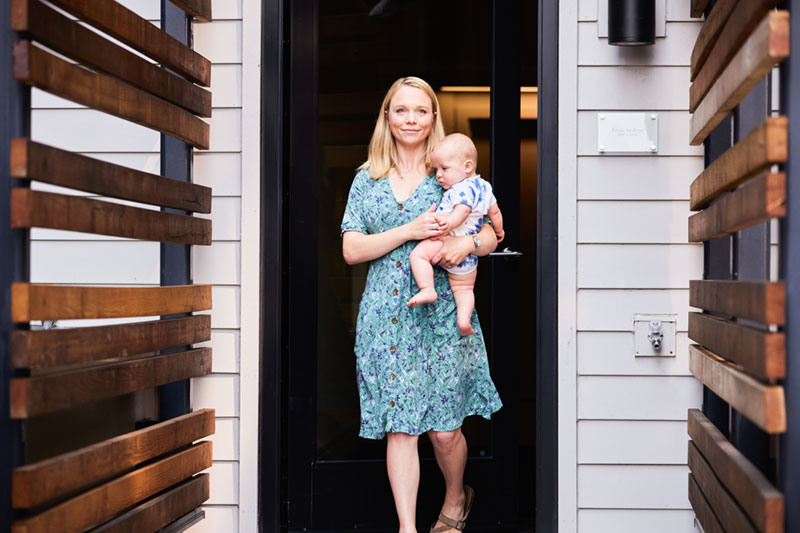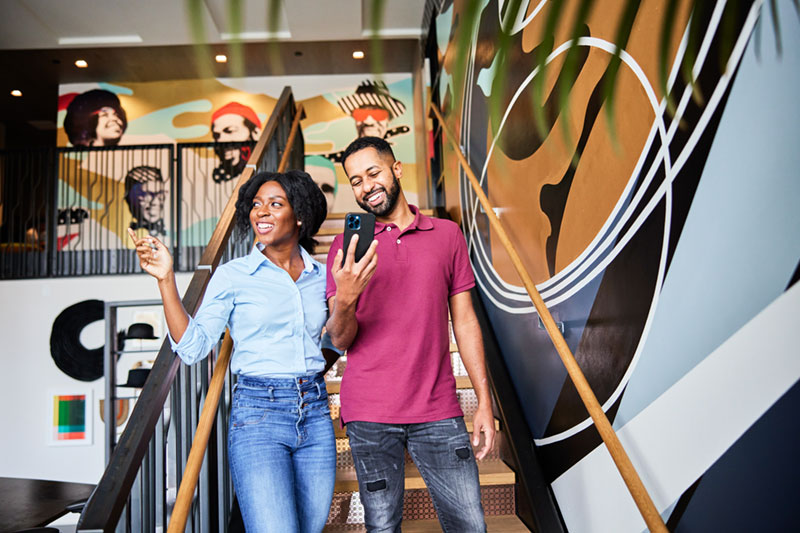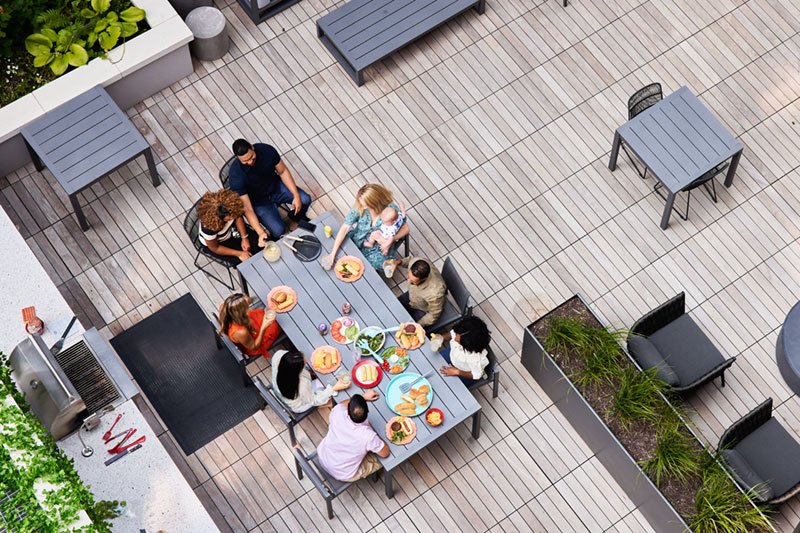We live in an on-demand world these days.
One-click online shopping, streaming video, and on-demand-everything from books and music to car rides has dramatically shifted our expectations in virtually all areas of our life. If you can watch a just-released film from your couch with the press of a button or pay your bills from your smart phone, shouldn’t everything in your life work as easily and effortlessly?
Maybe, but it’s not as easy as most people think—especially when it comes to the experience in the building where you work or live. Keeping an apartment building safe while also making it effortless to get around in and still meeting the functional needs of multiple residents have historically been mutually exclusive outcomes. Locks keep intruders out, but they slow people down as they try to get into their buildings and apartment units. But the ecosystem of security – and, more broadly, the technology that supports real estate property – is changing fast too. Today, the right system can not only keep people safe, but also make the lives of residents and property managers easier.
That’s especially true in the world of multifamily housing. By anticipating and innovating around technology trends, we’re able to not only protect residents, but also make the property more attractive to potential renters while helping building owners effectively manage costs.
And those intersections can take place in a number of interesting ways in the day-to-day operations and experience of the building.
Access control and digital locks
 Picture walking up to your building or in from the parking garage with an armful of groceries. Not long ago, you’d have had to fumble in your pocket for keys or a fob. Today, it’s a much more effortless affair. Just walk up to your door and a wireless lock will recognize your mobile smartphone credential and effortlessly welcome you inside.
Picture walking up to your building or in from the parking garage with an armful of groceries. Not long ago, you’d have had to fumble in your pocket for keys or a fob. Today, it’s a much more effortless affair. Just walk up to your door and a wireless lock will recognize your mobile smartphone credential and effortlessly welcome you inside.
That convenience and ease of use also extends to move-ins and move-outs. New digital door locks can slash the time that units remain unoccupied after a resident moves out while awaiting a locksmith to re-key the old physical door lock. They also represent a notable cost savings for building owners by avoiding the requisite hardware replacement and labor expenses.
How notable? The average locksmith’s visit costs $153 – and rekeying generally runs between $50 and $100 per hour. Even better, residents are willing to pay at least an extra $20 per month for the added convenience of keyless access, according to property management software provider Entrata.
Our technology also makes the turnaround time for on- and offboarding new residents much shorter. Historically, property management systems, like rent billing and the video intercom system, would be managed separately from each other, creating a lot of logistical and repetitive administrative work for the PM entering the same resident data repeatedly for each system. Now, in contrast, our open system integration with these management platforms enables a property manager to simultaneously activate a new resident identity on the lease, in the billing system and with the associated access credential with only one data entry across all of the building’s systems.
That not only saves time, it improves security. Disconnected systems carry the risk that a resident who moves out doesn’t have their access deactivated in the access control system. When the two systems are linked, it eliminates the chance that someone who shouldn’t have access can still get in the building.
Guest access
 We all have a regular flow of people in and out of our lives. Friends. Family. Dog walkers. Cleaners. And in a multifamily building, that creates some choke points. Historically, residents have buzzed guests in via an intercom, but those systems have required someone to wait by the phone, creating inherent inconvenience and even potential security risk. (Alternatively, those visitors would stop by the property management office to get checked in and get a key, which consumes a lot of a property manager’s time.)
We all have a regular flow of people in and out of our lives. Friends. Family. Dog walkers. Cleaners. And in a multifamily building, that creates some choke points. Historically, residents have buzzed guests in via an intercom, but those systems have required someone to wait by the phone, creating inherent inconvenience and even potential security risk. (Alternatively, those visitors would stop by the property management office to get checked in and get a key, which consumes a lot of a property manager’s time.)
Modern intercoms are a lot more secure and convenient. They can send alerts to a resident’s smart phone, wherever the resident might be at the moment, letting them know when a guest or a service person has arrived on-site, providing video-enabled visual verification of the person at the door. The resident, regardless of their current location, can remotely grant or deny access to the people instantly.
Got a friend or family member in from out of town? No problem. Longer-term guests can be given temporary special access rights that lets them come and go, while keeping a record of their activity.
All of this is only possible because we think about the technology of security and the convenience of the user experience. And that can only happen when we have integrated the system design, the hardware and the software and the service experience, which is well beyond the capabilities of a typical security systems integrator.
Self-guided tours for prospects
 Arranging a showing time of a model unit that fits the schedules of both prospective residents and property managers is a pain. Our self-guided tour management system will soon let prospects visit a unit at a time that’s convenient for them, while still ensuring the property security.
Arranging a showing time of a model unit that fits the schedules of both prospective residents and property managers is a pain. Our self-guided tour management system will soon let prospects visit a unit at a time that’s convenient for them, while still ensuring the property security.
Potential residents make a reservation and download an app, which verifies their identity and gives them time-limited access to specific parts of the building during a defined time window. Because they are required to request and receive one-time-limited access using their smart phone app to enter a location, there’s a clear record of identification and movement on the property. And there’s no need to have a property manager present, so tours could occur during non-traditional hours if desired and the expensive time of the property manager can be allocated elsewhere.
Millennials and Generation Z are increasingly looking to move to urban centers, resulting in denser residential housing. The generations that grew up with smart phones want smart homes, too. And those require smarter security solutions that can integrate with the overall building management ecosystem.
The open standard technology we have developed for the Kastle access platform communicates with Building Management Systems, notifying them of each individual user’s presence, their access rights, traffic patterns, space usage and more. Managers can use that data when determining how to operate most effectively and efficiently for individuals or for the aggregated user base.
I’m excited about what lies ahead for Kastle and our customers. The revolutionary advances in property technology will help to create a next generation experience for both residents and property managers, while building owners can offer a state-of-the-art facility that keeps residents safe, differentiates their properties, and makes the residents’ lives as effortless as the rest of their digital lives have taught them to expect.
To see examples of how Kastle keeps residents safe while upgrading the quality of the living experience in multifamily communities, click here.

